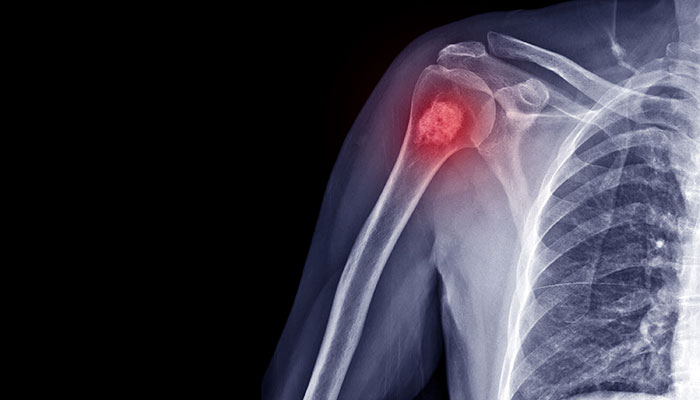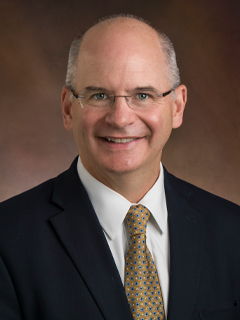HOW CAN WE HELP YOU? Call 1-800-TRY-CHOP
In This Section
CHOP Researcher Awarded ‘Super Grant’ to Develop Drugs for Rare Bone Cancer

With the Fight Osteosarcoma Together grant, Dr. Patrick Grohar and his collaborators will aim to uncover exactly how MYC affects tumor growth in osteosarcoma.
On his first day as a pediatric hematology-oncology fellow, Patrick Grohar, MD, PhD diagnosed a 17-year-old patient with Ewing sarcoma — a rare, painful cancer that starts in a patient's bones or soft tissue. By the end of the year, the teenager had died. Dr. Grohar, a chemist by training, was compelled to act.
"I thought, 'Well, we have to do something about this,'" said Dr. Grohar, now a pediatric oncologist at Children's Hospital of Philadelphia and director for Translational Research at CHOP's Center for Childhood Cancer Research.
Dr. Grohar is a physician-scientist and an internationally recognized expert in Ewing sarcoma who has led the development of new drugs to treat the disease, which are undergoing testing in clinical trials.
That research has paved the way for the Grohar Lab to now study and develop new treatments for the most common bone cancer: osteosarcoma.
Five funding partners awarded Dr. Grohar a $1.5 million Fight Osteosarcoma Together Super Grant, with the goal of bringing a new drug therapy to clinical trials within the next three years. Collaborators on the Fight Osteosarcoma Together Super grant include researchers from the University of Michigan, Vuja de Sciences, and Memorial Sloan Kettering.
"We are excited to bring lessons learned from years of Ewing sarcoma research into this new endeavor," Dr. Grohar said.
From the Bench to the Bedside
For three decades, scientists have known that Ewing sarcoma is dependent on the continued activity of a protein target called EWS-FLI1; however, that target was long considered "undruggable," according to Dr. Grohar.
After years of basic science research, the Grohar Lab identified the drug combination of trabectedin and irinotecan — as well as methods to best administer the treatments — to target EWS-FLI1. Researchers are testing the effectiveness of the drug combination in a Phase I/II study called SARC037. CHOP is one of six study sites.
While the drug combination has shown promise in shrinking patients' tumors, researchers also have observed some resistance to the treatment. A new grant from the National Institutes of Health will allow Dr. Grohar and colleagues to improve the EWS-FLI1-directed therapies, aiming to make them safer and more effective for patients with Ewing sarcoma.
The Grohar Lab is hoping to replicate that success to develop therapies for patients with osteosarcoma.
One of the primary challenges in treating osteosarcoma is that it is a highly heterogeneous disease with multiple genetic mutations that drive tumor growth; however, there is at least one mutation that many patients share.
"Our group became interested in osteosarcoma because it does appear that there is a subset of patients who have a particular vulnerability, called an MYC amplification, which is related to EWS-FLII in Ewing sarcoma," Dr. Grohar said.
While the MYC oncogene contributes to many types of cancers, and there are several molecules that have been described as MYC inhibitors, "the MYC in osteosarcoma is not necessarily the MYC in, say, malignant melanoma," Dr. Grohar said.
With the Fight Osteosarcoma Together Super grant, Dr. Grohar and his collaborators will aim to uncover exactly how MYC affects tumor growth in osteosarcoma.
"Then we'll take every available compound that's been described as an MYC inhibitor and see how they modulate that phenotype," Dr. Grohar said. "At the same time, we'll design a screen to identify new inhibitors."
To speed up the process, the research team will leverage osteosarcoma in animal models, since the bone cancer is nearly genetically identical in both children and canines.
If his previous drug development research is any indication, then Dr. Grohar expects human clinical trials for a new osteosarcoma treatment could begin within the next five years.
"There is no better feeling than seeing a patient's tumor shrinking on a scan as the result of a therapy that came out of our lab," he said.
